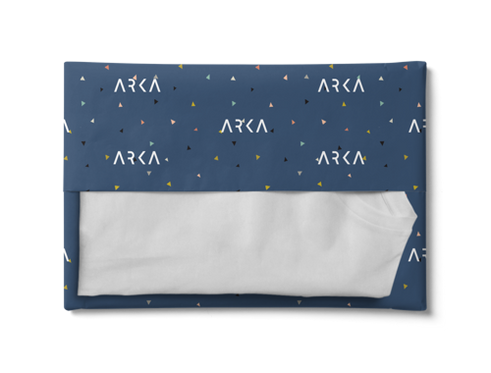Packaging 101: The Complete Guide
- Packaging 101
- Types of Packaging
- Aseptic Packaging
- Blister Packaging
- Biodegradable Packaging
- Bulk Packaging
- Carbon Neutral Packaging
- Circular Packaging
- Clamshell Packaging
- Compostable Packaging
- Cornstarch Packaging
- Corrugated Packaging
- Discreet Packaging
- Ecommerce Packaging
- Flexible Packaging
- Frustration Free Packaging
- Retail Packaging
- Secondary Packaging
- Smart Packaging
- Sustainable Packaging
- What is a PR Package?
- What is a Poly Mailer?
- Packaging Design Ideas
- AI Packaging Design
- Bakery Packaging Ideas
- Bath Bomb Packaging Ideas
- Bath Salt Packaging Ideas
- Body Butter Packaging Ideas
- Body Oil Packaging Ideas
- Body Scrub Packaging Ideas
- Brownie Packaging Ideas
- Cake Packaging Ideas
- Cake Pop Packaging Ideas
- Candle Packaging Ideas
- Candy Packaging Ideas
- Canva Packaging Design
- Chocolate Packaging Ideas
- Cinnamon Roll Packaging Ideas
- Clothing Packaging Ideas
- Coaster Packaging Ideas
- Coffee Bag Design Ideas
- Cookie Packaging Ideas
- Cosmetics Packaging Design
- Cotton Candy Packaging Ideas
- Cupcake Packaging Ideas
- DIY Packaging Ideas
- Dog Treat Packaging Ideas
- Food Packaging Ideas
- Empanada Packaging Ideas
- Etsy Packaging Ideas
- French Fries Packaging Ideas
- Frozen Food Packaging Ideas
- Hair Extension Packaging Ideas
- Handbag Packaging Ideas
- Jewelry Packaging Ideas
- Keychain Packaging Ideas
- Lash Packaging Ideas
- Lip Gloss Packaging Ideas
- Macaron Packaging Ideas
- Minimalist Packaging Ideas
- Mug Packaging Ideas
- New Employee Welcome Kit Ideas
- Packaging Colors
- Packaging Inserts Ideas
- Packaging Logo Design
- Packaging Typography
- Perfume Box Design Ideas
- Pizza Box Design Ideas
- Popcorn Packaging Ideas
- Scarf Packaging Ideas
- Skincare Packaging Design Ideas
- Soap Packaging Ideas
- Sock Packaging Ideas
- Sticker Packaging Ideas
- Sunglass Packaging Ideas
- Sustainable Packaging Ideas
- Tea Packaging Ideas
- Wax Melt Packaging Ideas
- Weed Packaging Ideas
- T-Shirt Packaging Ideas
- Wine Packaging Design Ideas
- What is a Packaging Engineer?
- Types of Packaging Materials
- Chipboard vs Cardboard
- Compostable Packaging Materials
- Alternatives to Plastic Packaging
- Edible Packaging Materials
- Food Packaging Materials
- Are Poly Mailers Recyclable?
- How to Recycle Cardboard Boxes
- How to Recycle Packaging Materials
- Medical Device Packaging Materials
- Mono Material Packaging
- Pharmaceutical Packaging Materials
- Plastic Food Packaging
- Protective Packaging Materials
- Reusing Packaging Materials
- Types of Packaging Foam
- Void Fill Packaging
- What is Chipboard?
- What is Kraft Paper?
- Offset vs Digital Printing
- RGB vs CMYK Printing
- Screen Printing vs Digital Printing
- Screen Printing vs Sublimation
- What is a Dieline in Packaging?
- What is Die Cutting?
- What is Digital Printing?
- What is Flexographic Printing?
- What is Glassine Paper?
- What is Offset Printing?
- What is Spot UV Printing?
- Why is 300 DPI Good for Printing?
- How to Estimate Shipping Costs
- How to Pack Glass for Shipping
- How to Mail a Bubble Mailer
- How to Make a Shipping Label
- How To Measure Box Dimensions and Sizes
- How to Ship Alcohol
- How to Ship Artwork
- How to Ship Books
- How to Ship a Cake
- How to Ship Candles
- How to Ship Chocolate
- How to Ship Clothes
- How to Ship Cookies
- How to Ship Food
- How to Ship a Hat
- How to Ship Jewelry
- How to Ship a Laptop
- How to Ship Perfume
- How to Ship a PC
- How to Ship Perishable Food
- How to Ship Plants
- How to Ship Shoes
- How to Ship Vinyl Records
- Packaging Symbols
- Shipping Large Items
- What is a Delivery Exception?
- What is Shipping Insurance?

Discover Phillip Akhzar’s journey, the Founder and CEO of Arka, bringing 16 years of expertise in packaging and supply chain logistics. Read more on Arka.
What Makes Chocolate Susceptible to Damage?
Chocolate is especially vulnerable to heat, humidity, and rough handling. The main culprit behind its fragility is cocoa butter, a fat that melts between 86°F and 90°F (30°C to 32°C), just below body temperature. Even brief exposure to warm weather can cause chocolate to soften or completely melt during transit.
In addition to melting, chocolate can suffer from:
Fat bloom: This occurs when cocoa butter separates and recrystallizes on the surface, giving chocolate a whitish, streaky appearance. It doesn't affect taste but diminishes visual appeal.
Sugar bloom: Caused by moisture, this form of bloom happens when water dissolves surface sugar and re-solidifies. It creates a gritty texture and spotted surface.
A study published in Food Chemistry confirmed that bloom formation reduces the consumer-perceived quality of chocolate and is more common in temperature fluctuations above 70°F (21°C).
Key Packaging Materials for Chocolate
To prevent heat exposure, impact damage, or moisture contamination, packaging must combine insulation, cushioning, and leak protection. This isn’t just about performance, it also shapes the unboxing experience and brand impression.
Arka helps chocolate makers, from boutique truffle shops to nationwide gift delivery brands, design custom chocolate boxes that do both: protect the product and communicate brand quality.

Insulated Liners and Thermal Mailers
Insulated box liners or foil thermal mailers create a temperature barrier. Products like eco-friendly cotton liners or reflective bubble wrap help reflect heat and preserve internal temperature. According to WebstaurantStore, insulated packaging extends the safe transit window for chocolate by up to 48 hours when used with gel packs.
Cold Packs or Gel Refrigerants
Gel packs are widely used to maintain temperatures between 32–65°F. However, too much cold can lead to condensation and sugar bloom, so refrigerants must be used strategically, typically positioned above and below the product and wrapped to prevent condensation contact.
Custom Rigid Boxes
Corrugated mailer boxes with dividers or molded trays keep chocolate secure and presentable. Arka’s custom boxes ensure chocolates stay snugly in place, eliminating extra air space that can lead to heat pockets or movement damage. Their FSC-certified packaging is also ideal for brands prioritizing sustainability.
How to Pack Chocolate for Shipping
Proper chocolate packaging creates multiple layers of protection that maintain temperature, prevent physical damage, and control moisture throughout the shipping process.
Prep the Chocolate for Transit
Never freeze chocolate before shipping, as rapid temperature changes can cause bloom and texture problems. Instead, chill chocolate to around 65-70°F before packaging, cool enough to provide a temperature buffer but not so cold that condensation forms when exposed to warmer air.
Keep chocolate dry during preparation by working in a low-humidity environment when possible. Moisture on chocolate surfaces can cause sugar bloom or make packaging materials soggy during transit.
Use an Inner Container
Place chocolate in a sturdy inner container that provides the first layer of protection. This might be the product's original packaging, a custom box, or a protective sleeve that keeps individual pieces separated and cushioned.
Include moisture-absorbing packets (silica gel or similar) in the inner container to control humidity and prevent condensation. These small packets can make a significant difference in maintaining chocolate quality during transit.

Wrap and Pad to Prevent Movement
Wrap the inner container in bubble wrap or foam padding to prevent movement and provide additional insulation. The wrapping should be snug but not tight enough to create pressure points that might damage delicate chocolate pieces.
Create cushioned compartments for individual chocolate pieces when shipping assortments or fragile items. This prevents pieces from knocking against each other during handling.
Add Insulated Liners & Refrigerants
Line your shipping container with thermal bubble wrap or reflective insulation before adding gel packs or other refrigerants. Position coolants around the sides and top of your chocolate package rather than directly underneath, which can create cold spots that might damage the chocolate.
Distribute refrigerants evenly throughout the container to maintain consistent temperatures. Avoid creating hot spots by ensuring adequate coolant coverage around all sides of your chocolate package.
Place in a Sturdy, Sealed Outer Box
Select an outer shipping box that provides adequate space for insulation and coolants while remaining as compact as possible. Big shipping boxes require more coolant to maintain temperature and cost more to ship.
Fill all void space with appropriate packing materials that won't interfere with temperature control. Crumpled paper, air pillows, or biodegradable packing peanuts work well for this purpose.
Label Clearly with "Perishable" and "Keep Cool"
Apply clear, visible labels that alert handlers to your package's temperature-sensitive contents. Use "Perishable," "Keep Cool," and "This Side Up" labels as appropriate for your specific packaging configuration.
Include handling instructions that help ensure proper treatment throughout the shipping process. Clear labeling can prevent packages from sitting in hot vehicles or warehouses longer than necessary.
Best Practices for Shipping Chocolate Without It Melting
Choosing when and how to ship is just as important as packaging. Here are some strategies backed by industry best practices:
-
Ship early in the week: Avoid weekend delays by shipping Monday through Wednesday.
-
Use express services: FedEx Overnight or UPS 2nd Day Air reduce exposure time.
-
Monitor weather conditions: Avoid shipping during heatwaves or to high-temperature zones without extra insulation.
-
Hold for pickup: Allow customers to pick up at the carrier location rather than leaving the package outside in heat.
-
Custom-sized corrugated mailer boxes for a snug, secure fit
-
Eco-friendly insulated liners to protect chocolates from heat
-
Molded pulp or cardboard inserts to hold confections in place during transit
-
Compostable or recyclable packaging materials, aligned with sustainable brand values
-
Custom-printed outer boxes with food-safe, water-based inks to elevate unboxing experiences
These solutions help small and medium-sized chocolatiers ship confidently, even during warmer months.

Best Practices for Shipping Homemade or Gourmet Chocolate
Homemade and artisanal chocolates often require extra care due to their unique formulations and lack of commercial preservatives. Use temperature monitoring devices for valuable shipments to track conditions throughout transit.
Prevent bloom and fat separation by maintaining consistent temperatures and avoiding rapid temperature changes. This is particularly important for chocolates with delicate decorations or fillings that might be sensitive to temperature fluctuations.
Chocolate-dipped or filled treats need extra protection due to their complex structures and multiple components that might react differently to temperature changes. Package these items with additional cushioning and consider shorter shipping timeframes.
How to Ship Chocolate Internationally
International chocolate shipping introduces additional complexity through longer transit times, customs requirements, and varying climate conditions along shipping routes.
Customs Regulations for Chocolate
Most countries allow chocolate imports for personal consumption, but commercial shipments may require additional documentation. Declare chocolate contents accurately on customs forms, including ingredients that might be restricted in certain countries (like nuts or dairy products).
Research destination country requirements before shipping. Some nations have restrictions on certain chocolate ingredients or require specific labeling for imported confections.
International Carrier Choices
UPS Worldwide Express and FedEx International Priority offer reliable service for international chocolate shipments, with tracking and customs clearance assistance. These services cost more but provide better handling and shorter transit times than economy options.
DHL specializes in international shipping and has experience with food products, making them another strong choice for chocolate shipments to many destinations.
Extended Transit Time & Packaging Adjustments
International shipments require more robust packaging due to longer transit times and more handling. Increase insulation thickness and coolant quantities to account for extended exposure to varying temperatures.
Consider using dry ice for long international shipments, following all hazardous material regulations for international transport. This requires additional documentation and fees but provides superior temperature control for extended periods.
How Much Does It Cost to Ship Chocolate?
Chocolate shipping costs vary significantly based on package size, weight, destination, and required insulation. Basic domestic shipments start around $15-25 for small packages using ground services with minimal insulation.
Overnight shipping for temperature-sensitive chocolate can cost $30-75 or more, depending on package size and destination. Two-day shipping often provides a good balance of cost and protection for most chocolate shipments.
Flat-rate boxes can be economical for heavier chocolate shipments when properly insulated, but dimensional weight pricing may make custom-sized packages more cost-effective for lighter items.
Final Thoughts
Chocolate shipping success hinges on temperature control, thoughtful packaging, and reliable transit. Melting and bloom aren’t just quality issues, they damage your brand reputation. By using best-in-class materials, timed delivery windows, and branding that leaves a memorable impression, chocolate businesses can deliver sweets that taste and look perfect.
With Arka, you gain access to custom-sized, eco-conscious, and presentation-ready packaging that protects fragile chocolates while reinforcing your brand identity. Whether you're shipping across town or across the world, Arka ensures your chocolate arrives fresh, flawless, and on brand.









